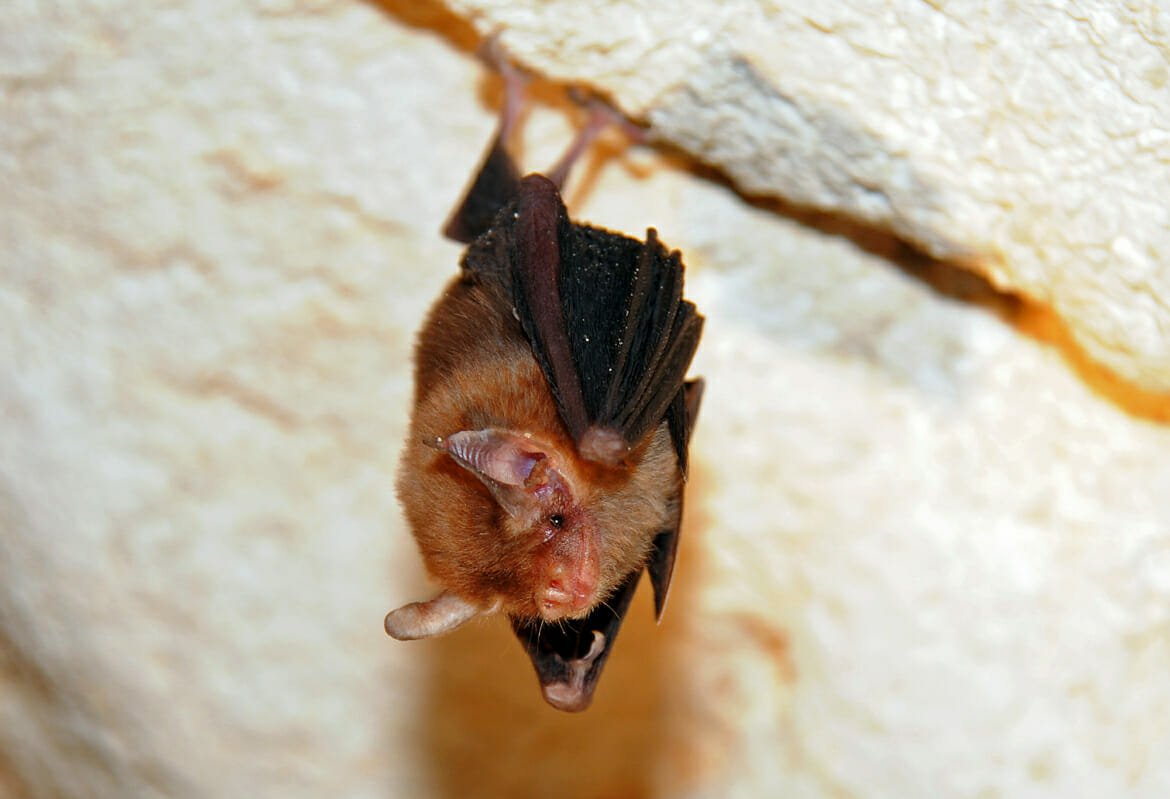In 1973, Thai biologist Kitti Thonglongya and his team collected more than 50 unidentified bats in caves near the Sai Yok waterfall in Thailand. He sent specimens to Dr. J. E. Hill of the British Museum of Natural History in London.
Sadly, Kitti died before learning that he had discovered a new bat species, which Hill named Craseonycteris thonglongyai in Kitti’s honor.
Its common name is Kitti’s hog-nosed bat.

About 1.25 inches [30 mm] long, with a wingspan of approximately 5 inches [13 cm], Kitti’s hog-nosed bat is the smallest known bat and is one of the smallest mammals.
In fact, it is so tiny that it is sometimes called the bumblebee bat. Its other distinctive traits are the piglike nose (reflected in its name), the complete absence of a tail, and large ears with swollen tragi, or ear canal covers.
These bats can be found only in the Sai Yok National Park in Thailand and in nearby parts of Myanmar.
Like many other species, Kitti’s hog-nosed bats employ echolocation when on the hunt for insects. Having wings that are long for its size, the mammal is well adapted to hovering, which may enable it to pluck prey from the foliage of trees.
When roosting, the animal prefers the warm upper regions of limestone caves with high ceilings and many chambers --places that afford more protection and minimize the loss of body heat, which is an important consideration for tiny, warm-blooded mammals.

Because Kitti’s hog-nosed bat is extremely rare and occupies just a small territory, its survival is at risk if its circumstances do not improve.
Efforts have been made to provide better protection, but deforestation, logging, road construction, and tourism continue to be a threat. Whether this tiny mammal has the resilience to survive the onslaught of human intrusion into its fragile habitat remains to be seen.

Herewith is the collection of some of the most interesting facts about this world's smallest mammals too:
1. Their upper part of body is normally a reddish/brown or grey in color, whilst their underside is pale in color.
2. They have dark colored wings with long tips that enables them to hover in the air
3. This bat's diet consists of mainly insects
4. On their face they have a pig-like nose, small eyes and large ears. They have a large web of skin between their back legs, known as the "uropatagium". This gives them assistance when in flight
5. They are most active at dusk when they fly around teak trees and clumps on bamboo capturing insects
6. They live in small colonies of around 10 - 100 individuals high up in limestone caves in forested areas near rivers
7. Very little is currently known about their reproduction. It is believed that they give birth to a single young at the end of April each year.
8. The Bumblebee Bat is named so, because of its similar size to a large bumblebee
Source : Various sources including https://wol.jw.org/en/wol/d/r1/lp-e/102010049


















